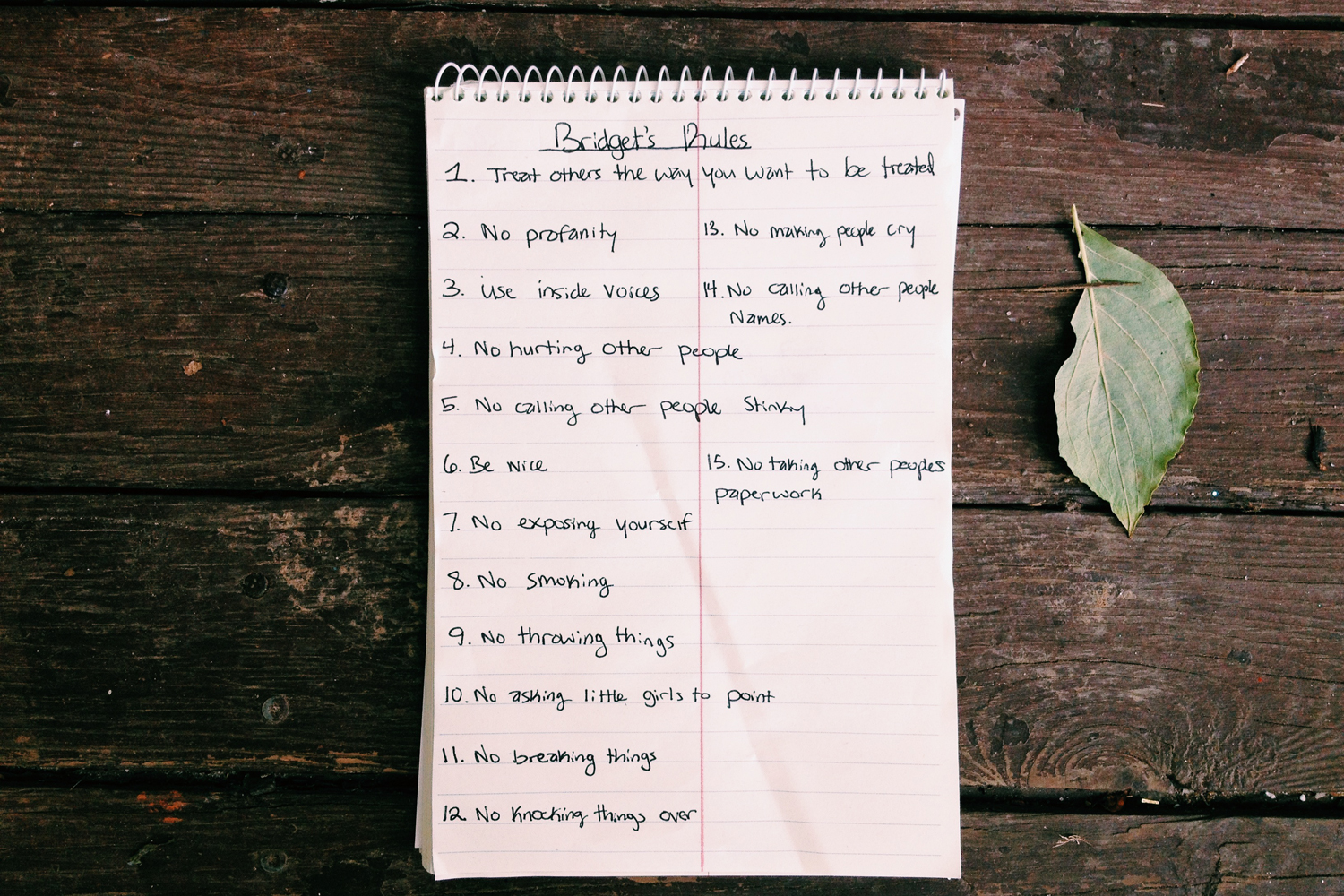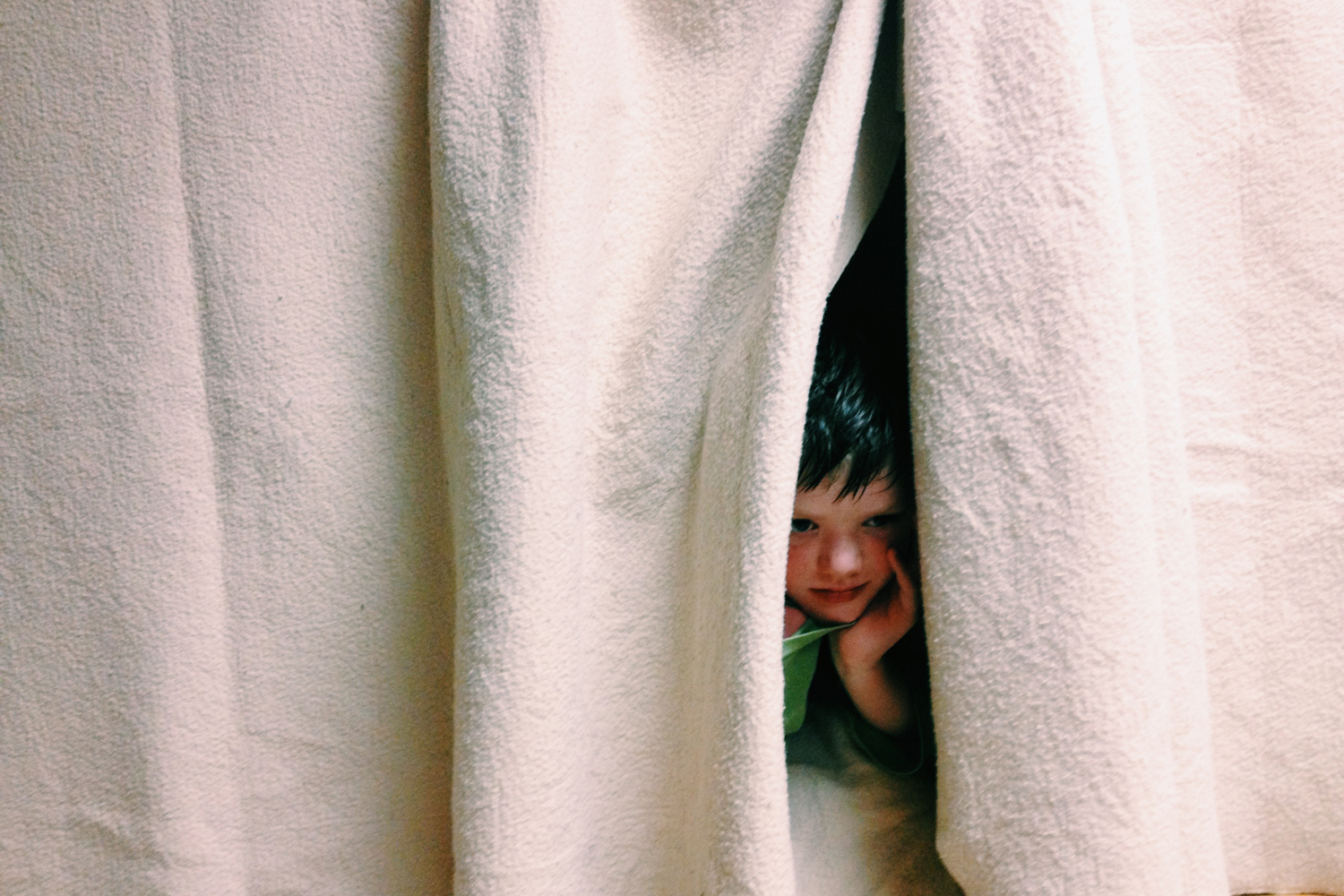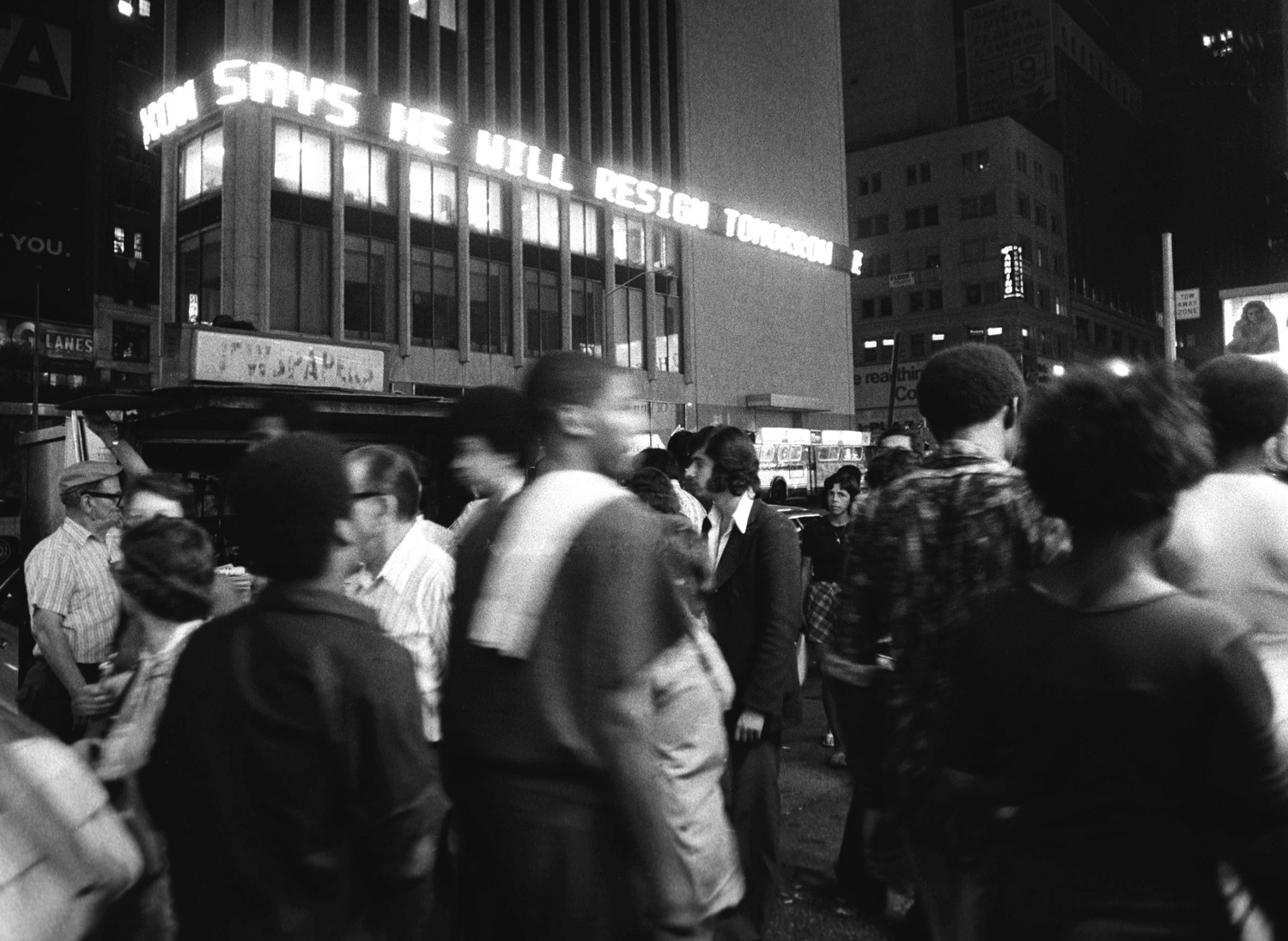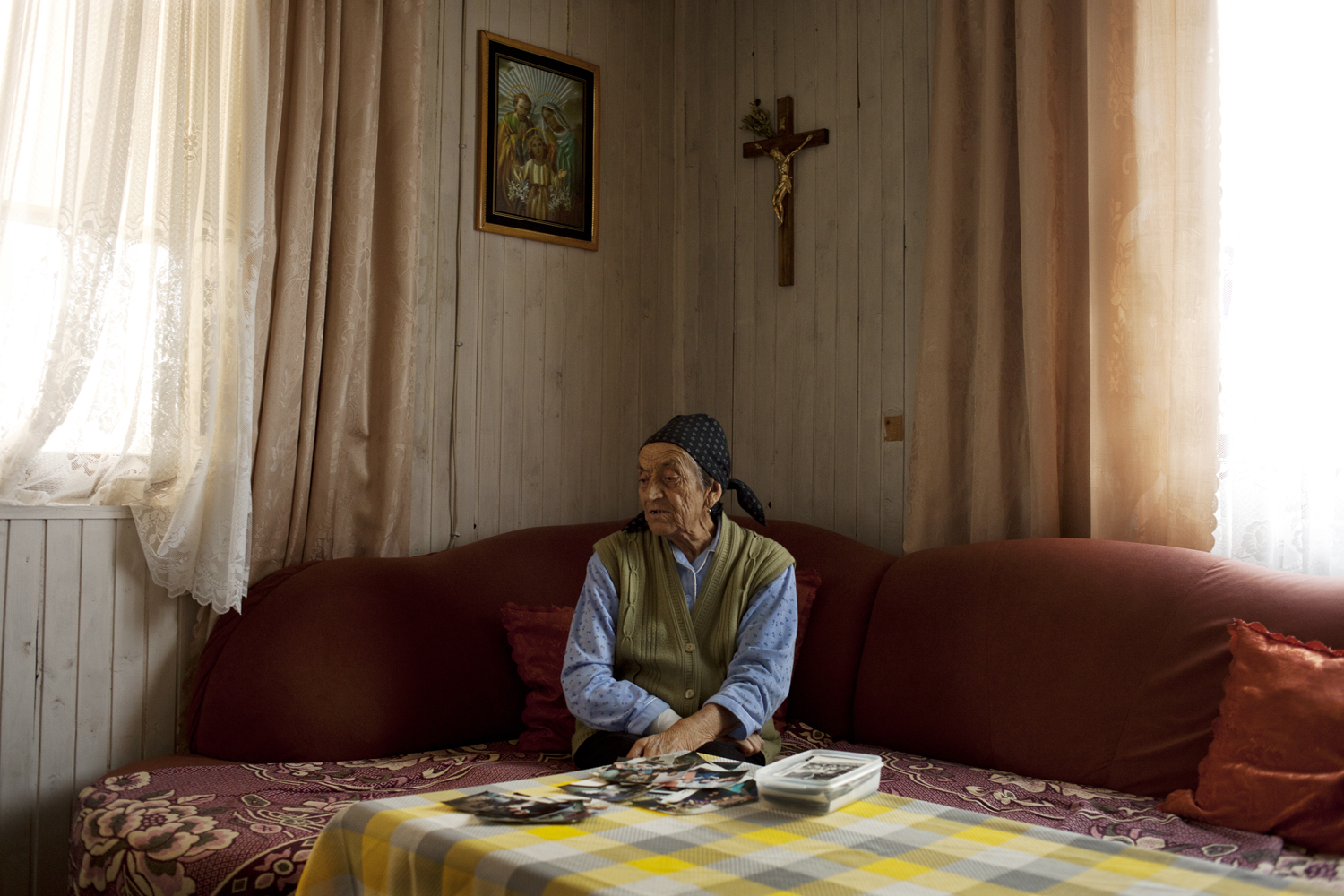As fall approaches, New York galleries take down their summertime group shows and gear up for their fall programing. In the course of the next three weeks, I’ll preview a handful of September exhibits that I’m especially excited about.
The first is a forthcoming exhibition, at Gitterman Gallery, of pictures by the photographer Josef Breitenbach (1896-1984). Below is a selction of Breitenbach’s photos, followed by a brief Q. and A. with Tom Gitterman, the owner of Gitterman Gallery.
Click on the red arrows  for a full-screen view.
for a full-screen view.
Tell me a little bit about Josef Breitenbach’s work and about this exhibit
 “Portrait, Paris” (1933-39)
“Portrait, Paris” (1933-39) “Carnival, Germany” (c.1930)
“Carnival, Germany” (c.1930) “Annabella” (1933-39)
“Annabella” (1933-39) “Aristide Maillol, Marley-Le-Roy” (1934)
“Aristide Maillol, Marley-Le-Roy” (1934) “Sculpture Academy, Paris” (c. 1935)
“Sculpture Academy, Paris” (c. 1935) “Max Ernst and his wife, Marie-Berthe Aurenche, Paris” (1936)
“Max Ernst and his wife, Marie-Berthe Aurenche, Paris” (1936) “Sheila, New York” (c. 1942)
“Sheila, New York” (c. 1942) “El (Hochbahn), New York” (1942)
“El (Hochbahn), New York” (1942) “Untitled” (c. 1946-49)
“Untitled” (c. 1946-49) “Untitled” (c. 1946-49)
“Untitled” (c. 1946-49) “Light in the Woods” (1930)
“Light in the Woods” (1930)
Tell me a little bit about Josef Breitenbach’s work and about this exhibit.
Breitenbach is best known for his sensitive and dynamic portraits of artistic luminaries and for his early use of color as an expressive element in photography. We are trying to expand the understanding of Breitenbach’s work, which relates to Pictorialism, modernism, Surrealism, and Abstract Expressionism. Breitenbach used whatever means was at his disposal, switching between traditional and experimental processes and employing a wide range of styles. This selection also emphasizes Breitenbach’s largely unknown body of cameraless photographs, made between 1946 and 1949, after Breitenbach lived in avant-garde Paris, in the nineteen-thirties, and taught at Black Mountain College, in 1944, for Josef Albers.
What is important to know about Breitenbach’s life and the ways in which it informed his work?
Breitenbach was raised with a profound respect for the history of art and culture, and he worked with a conscious understanding and appreciation for many different styles of artistic expression. His family had a wine business, which provided him with the means to travel outside of Munich, his home town, and experience more culture and artistic ideas. Living in Paris, where he spent time with Bertolt Brecht, Max Ernst, James Joyce, Aristide Maillol, and Wassily Kandinsky, must have had a huge impact on him. I also think that being interned, in 1939, escaping via Marseille, in 1941, and arriving in New York, in 1942, must have profoundly affected him.
Anything additional you would like to share about Josef Breitenbach, his work, or the exhibition?
It’s interesting to note that in addition to being Jewish, Breitenbach was a left-wing political activist with strong Socialist ideals that attracted the attention of the Nazis. In the essay “Josef Breitenbach: Manifest Beauty,” Larisa Dryansky writes, “In August 1933, a bank of SA trooper’s banged on the door of his studio. Thrusting under their noses a portrait of Von Papen he’d taken the year before, and a letter of thanks he’d received in exchange, Breitenbach convinced the gullible bullies that he was under the former chancellor’s protection. With his passport about to expire, Breitenbach made his way to France a few days later, joining the cohort of German exiles seeking refuge in Paris.”
All photographs copyright Josef and Yaye Breitenbach Foundation New York. Courtesy Gitterman Gallery.
![]() for a full-screen view.
for a full-screen view. 














 Addie and her counselor.
Addie and her counselor. Bridget’s rules for her week at camp.
Bridget’s rules for her week at camp. Noah brushes his teeth.
Noah brushes his teeth. Bridget holds her Sharpie markers while riding in the canoe.
Bridget holds her Sharpie markers while riding in the canoe.  McAlister and Angus walk to the pool.
McAlister and Angus walk to the pool. McAlister rests with Angus.
McAlister rests with Angus. Spencer touches Laura’s hair.
Spencer touches Laura’s hair.  Camp highlight: the epic Slip ’n Slide.
Camp highlight: the epic Slip ’n Slide. Tess walks to the sensory garden.
Tess walks to the sensory garden. Bridget likes to help lead the camp songs.
Bridget likes to help lead the camp songs.  Josh swims along the bottom of the pool.
Josh swims along the bottom of the pool.  Bridget watches her fellow-campers.
Bridget watches her fellow-campers.  Tess peeks out from the fort that she and Jaden made in their bunk room.
Tess peeks out from the fort that she and Jaden made in their bunk room. “Portrait, Paris” (1933-39)
“Portrait, Paris” (1933-39) “Carnival, Germany” (c.1930)
“Carnival, Germany” (c.1930) “Annabella” (1933-39)
“Annabella” (1933-39) “Aristide Maillol, Marley-Le-Roy” (1934)
“Aristide Maillol, Marley-Le-Roy” (1934) “Sculpture Academy, Paris” (c. 1935)
“Sculpture Academy, Paris” (c. 1935) “Max Ernst and his wife, Marie-Berthe Aurenche, Paris” (1936)
“Max Ernst and his wife, Marie-Berthe Aurenche, Paris” (1936) “Sheila, New York” (c. 1942)
“Sheila, New York” (c. 1942) “El (Hochbahn), New York” (1942)
“El (Hochbahn), New York” (1942) “Untitled” (c. 1946-49)
“Untitled” (c. 1946-49) “Untitled” (c. 1946-49)
“Untitled” (c. 1946-49) “Light in the Woods” (1930)
“Light in the Woods” (1930) U.S. President Richard Nixon. Photograph by Rene Burri/Magnum.
U.S. President Richard Nixon. Photograph by Rene Burri/Magnum. Police and telephone men check out the Democratic National Committee headquarters at the Watergate complex, in Washington, D.C., after five men were arrested during a break-in attempt on Saturday, June 17, 1972. Authorities called it an elaborate plot to bug the office and said the men had photographic equipment and electronic listening devices. Photograph by Ken Feil/Washington Post/Getty.
Police and telephone men check out the Democratic National Committee headquarters at the Watergate complex, in Washington, D.C., after five men were arrested during a break-in attempt on Saturday, June 17, 1972. Authorities called it an elaborate plot to bug the office and said the men had photographic equipment and electronic listening devices. Photograph by Ken Feil/Washington Post/Getty. The Washington Post reporters Carl Bernstein and Bob Woodward, who broke the Watergate story and wrote the book “All the Presidents Men,” 1974. Photograph by Wayne Miller/Magnum.
The Washington Post reporters Carl Bernstein and Bob Woodward, who broke the Watergate story and wrote the book “All the Presidents Men,” 1974. Photograph by Wayne Miller/Magnum.  Headline on the front page of the Washington Post: “Nixon Resigns.” Photograph by Alex Webb/Magnum.
Headline on the front page of the Washington Post: “Nixon Resigns.” Photograph by Alex Webb/Magnum.  Nixon and Gerald Ford discuss the transfer of the Presidency, August 8, 1974. Photograph by Corbis.
Nixon and Gerald Ford discuss the transfer of the Presidency, August 8, 1974. Photograph by Corbis. On the morning after announcing his resignation, Nixon and his wife, Pat, walk to the Marine One helicopter before returning to their home in California. Photograph by Alex Webb/Magnum.
On the morning after announcing his resignation, Nixon and his wife, Pat, walk to the Marine One helicopter before returning to their home in California. Photograph by Alex Webb/Magnum. New Yorkers read the electronic news ticker in Times Square, which announces, “Nixon says he will resign tomorrow,” August 8, 1974. Photograph by Barton Silverman/Redux.
New Yorkers read the electronic news ticker in Times Square, which announces, “Nixon says he will resign tomorrow,” August 8, 1974. Photograph by Barton Silverman/Redux. Nixon, standing with his son-in-law, David Eisenhower, bids goodbye to the personnel of the White House, August 12, 1974. Photograph by Keystone-France/Getty.
Nixon, standing with his son-in-law, David Eisenhower, bids goodbye to the personnel of the White House, August 12, 1974. Photograph by Keystone-France/Getty. A demonstrator carries a sign outside the White House on the eve of Nixon’s resignation, August 8, 1974. Photograph by Alex Webb/Magnum.
A demonstrator carries a sign outside the White House on the eve of Nixon’s resignation, August 8, 1974. Photograph by Alex Webb/Magnum.  A patient suffering from Balkan endemic nephropathy receives dialysis at a clinic in Slavonski Brod, Croatia. For patients with diseases like BEN, dialysis rarely buys more than five to ten years.
A patient suffering from Balkan endemic nephropathy receives dialysis at a clinic in Slavonski Brod, Croatia. For patients with diseases like BEN, dialysis rarely buys more than five to ten years. The Sava River, in Dubočac, Croatia, along the border with Bosnia. Like most BEN regions, this one is prone to flooding.
The Sava River, in Dubočac, Croatia, along the border with Bosnia. Like most BEN regions, this one is prone to flooding. Kidneys of BEN victims, preserved in formalin-filled jars at a hospital in Slavonski Brod. BEN-afflicted kidneys are notably atrophied; some are as small as walnuts.
Kidneys of BEN victims, preserved in formalin-filled jars at a hospital in Slavonski Brod. BEN-afflicted kidneys are notably atrophied; some are as small as walnuts. Dr. Ivana Vukovia and medical students from Zagreb are following up on a medical survey studying the progression of BEN by collecting urine and blood samples from people in endemic villages near Slavonski Brod.
Dr. Ivana Vukovia and medical students from Zagreb are following up on a medical survey studying the progression of BEN by collecting urine and blood samples from people in endemic villages near Slavonski Brod. A cemetery in Croatia. Without a kidney transplant or treatment by dialysis, patients with BEN usually die within a year.
A cemetery in Croatia. Without a kidney transplant or treatment by dialysis, patients with BEN usually die within a year.  A doctor collects aristolochia near a medical clinic in Croatia. According to the leading theory, poisoning by aristolochic acid, a toxin found in the plant, causes BEN.
A doctor collects aristolochia near a medical clinic in Croatia. According to the leading theory, poisoning by aristolochic acid, a toxin found in the plant, causes BEN. Medical students from Zagreb draw blood from a woman whose grandmother died of kidney disease. Her descendants were Ukrainian, which they think proves that BEN is an environmental disease and not genetic.
Medical students from Zagreb draw blood from a woman whose grandmother died of kidney disease. Her descendants were Ukrainian, which they think proves that BEN is an environmental disease and not genetic.  A statuette of the Virgin Mary on a grave in Croatia.
A statuette of the Virgin Mary on a grave in Croatia. A man with BEN at home in Croatia. His parents and his sister also had the disease.
A man with BEN at home in Croatia. His parents and his sister also had the disease. A BEN patient finishes lunch while receiving dialysis at a clinic in Croatia. Coppery skin discoloration is one of the symptoms of the disease.
A BEN patient finishes lunch while receiving dialysis at a clinic in Croatia. Coppery skin discoloration is one of the symptoms of the disease.  A wheat field in Slovanski Kobas. Some think BEN came because the weed aristolochia was growing in wheatfields and cornfields. It has declined, they say, because farmers now use pesticide in the fields and import much of their grain from other areas.
A wheat field in Slovanski Kobas. Some think BEN came because the weed aristolochia was growing in wheatfields and cornfields. It has declined, they say, because farmers now use pesticide in the fields and import much of their grain from other areas. Cena Beljan, in the village of Bukovica, was born in 1936, and has been on dialysis for ten years. “I don’t think about being sick,” she says. Her sisters and two of her husband’s sisters died of BEN.
Cena Beljan, in the village of Bukovica, was born in 1936, and has been on dialysis for ten years. “I don’t think about being sick,” she says. Her sisters and two of her husband’s sisters died of BEN. Books stored in a Franciscan monastery in Bosnia. The villages affected by BEN are in a region fraught with wars, revolutions, genocides, and totalitarianism—all of which have hampered research and medical recordkeeping. Old tomes like these, some of which are death registries, may offer information on early cases of the disease.
Books stored in a Franciscan monastery in Bosnia. The villages affected by BEN are in a region fraught with wars, revolutions, genocides, and totalitarianism—all of which have hampered research and medical recordkeeping. Old tomes like these, some of which are death registries, may offer information on early cases of the disease. A cemetery in Croatia, as reflected on a polished gravestone, on All Saints’ Day, when many families visit to pray and remember the deceased.
A cemetery in Croatia, as reflected on a polished gravestone, on All Saints’ Day, when many families visit to pray and remember the deceased.

